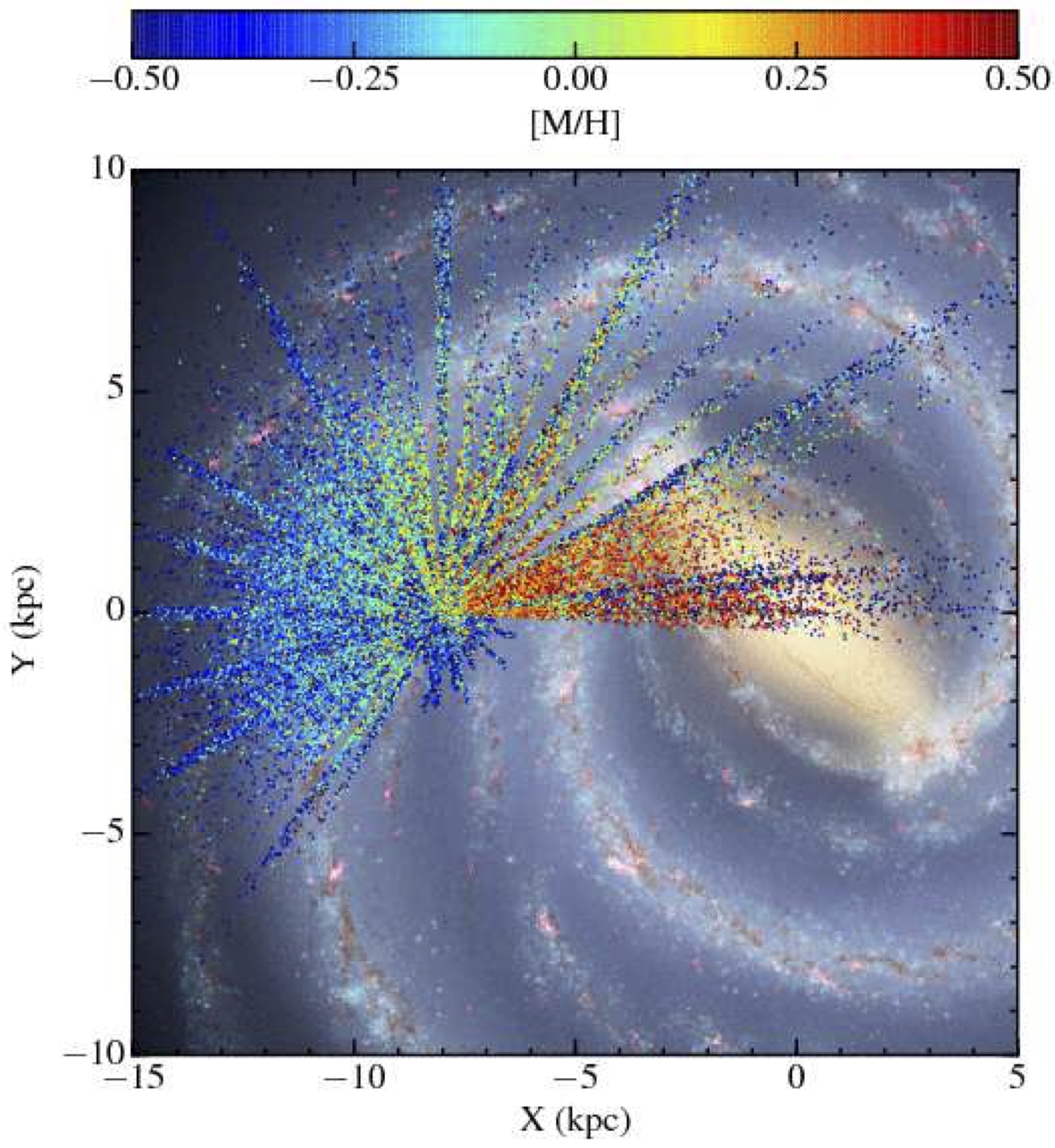Table of Contents
- APOGEE Data Products — A description of the APOGEE data products hosted at MAST.
APOGEE Overview
Survey Summary
The Apache Point Observatory Galactic Evolution Experiment (APOGEE) provides is a high-resolution, infrared spectra of over of over 650,000 unique stars in the Milky Way. APOGEE observes the "archaeological" record of the Milky Way Galaxy embedded in hundreds of thousands of stars to explore its assembly history and evolution. APOGEE acquired observations over the entire sky, targeting the disk, bulge, bar, and halo components of the Milky Way, as well as several hundred stars in nearby satellite galaxies (including the LMC and SMC), as shown in Figures 1 and 2 below. The raw data was processed using the APOGEE Data Reduction Pipeline, which produces Individual visit spectra from each night and combines them into a co-added reduced spectrum. The combined spectra are then analyzed in the APOGEE Stellar Parameters and Abundances Pipeline (ASPCAP), producing a comprehensive set of stellar parameters including temperature, surface gravity, and chemical compositions for more than 20 species of elements.
Figure 1 - Distribution of APOGEE fields in DR17 overlaid on an all-sky image from 2MASS. Each field is color-coded by the number of targets in that field. Image credit: C. Hayes & the SDSS Collaboration
Figure 2 - Projection of the APOGEE-1 observations onto an artist's impression of the Milky Way. The points are color-coded by their metallicity and shows the overall metallicity gradient in the Milky Way. Image Credit: Majewski et al. (2017)
Telescopes & Instrumentation
APOGEE data were obtained at the Apache Point Observatory in New Mexico using the SDSS-2.5m telescope (Gunn et al. 2006), the NMSU 1m telescope (Holtzman et al. 2010), and at the Las Campanas Observatory using the Irénée du Pont 2.5m Telescope (Bowen and Vaughan 1973). The APOGEE instrument (Wilson et al. 2019) is a high-resolution (R~20,000) infrared wavelength (1.5-1.8 microns) multi-object spectrograph. APOGEE acquires spectra for up to 300 objects simultaneously using fiber-fed plug plates.
Additional information about APOGEE observations can be found in the SDSS documentation.
Data Products & Access
MAST has archived the high-level "science ready" data products from the APOGEE survey. The APOGEE Data Products page contains details on which files are available at MAST, which includes the individual-visit spectra, combined spectra, and the best-fit model spectrum and measurements from the APOGEE Stellar Parameters and Abundances Pipeline (ASPCAP). These files are available for download through several MAST interfaces, including the MAST Portal and programmatically in Python through astroquery.mast. For information on how to access and download APOGEE data through MAST, please refer to the SDSS Data Access at MAST article. An example spectrum from APOGEE is shown in Figure 3 below.
If you are looking for SDSS raw data, intermediate and ancillary pipeline products, these are not available at MAST and should be accessed through the SDSS Science Archive Server (SAS).
Figure 3 - Example APOGEE spectrum of the Sun, reflected off of the asteroid VESTA (aspcapStar-dr17-VESTA.fits).
Citations and Acknowledgements
Refer to the SDSS Surveys page for instructions on how to cite this document and acknowledge the use of data obtained from MAST in publications.
For other relevant APOGEE citations, please refer to the APOGEE Technical Papers list. These include:
- SDSS DR-17 Overview: Abdurro’uf et al. 2022
- APOGEE Survey Overview: Majewski et al. 2017
SDSS 2.5-meter Telescope description: Gunn et al. 2006
- APOGEE Instrumentation: Wilson et al. 2019
- APOGEE Data Reduction Pipeline: Nidever et al. 2015
- APOGEE Data Analysis Pipeline (ASPCAP): Garcia Perez et al. 2016


